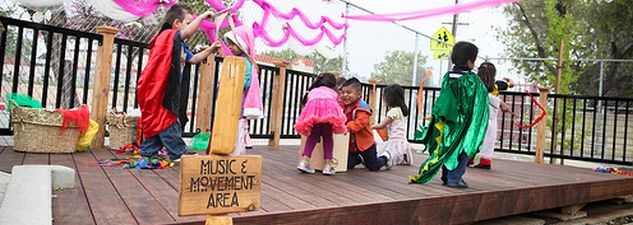
Environment, Materials, and Program Structure
- Invite staff to read the Developmental Sequence, PCF, Vol. 2, pp. 56-57. After reading the developmental sequence, discuss different children who they have observed at different developmental levels. Together brainstorm the different types of environment invitations that may best benefit these children.
- Provide the appendix of materials. Have teachers walk through their room circling any material they see. Next teachers circle any material they think would be interesting to have in the classroom. Finally participants choose three materials to add to the classroom in the next week.
- Invite teachers to read the article, “Creating Centers for Musical Play and Exploration.” Highlight the section Teachers Roles on page 32. Together with teachers, read each role and definition. Ask teachers to reflect on which role they take on most, as well as which role they take on least and why. Challenge the teachers to each take on the least comfortable role at least once a day.
- Ask teachers to think about the last time they re-arranged furniture in their home or bedroom. Was the arrangement right the first time, or did they consider other options and move it around for a few days? This illustrates the idea that works of art take time. We are developmentally focused on the process and want to allow ample time. Together brainstorm ideas of visual art that can be started and returned to over a period of time. Some ideas include: a mural on a flattened cardboard box, sidewalk chalk in a place that won’t get washed away, or a class collage on butcher paper.
- Give teachers the tip sheet, "Drama and Young Children," from the Illinois State Board of Education. Plan with teachers on how to gather pet props (leashes, bowls, stuffed animals, empty food containers, etc.) from families and the community. Work with teachers on creating an "animal shelter" outdoors. Help teachers model themes for children such as feeding the pets, taking the pets to the vet, "adoption" of pets, etc. Suggest extending this activity with appropriate children's literature.
